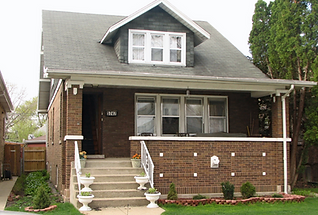THE CHICAGO BUNGALOW

Chicago Bungalow Origins
For over 100 years, the Chicago bungalow has been an indelible piece of the city’s landscape. Circling Chicago’s center from the far north to the farthest south side neighborhoods, this building style reflects the pattern of development in the early 20th century, the spark of the American desire for homeownership and the rooting of many immigrant communities. As Chicago’s population grew and density increased, so did the desire for greater space, light and access to outdoors; all of which the bungalow provided.
What started as a casual California cottage in the late 19th century quickly spread east to growing cities, like Chicago, during the early 20th century. Local architects and contractors were quick to adapt this modern housing style to suit Chicago’s narrow lot size and climate.
The result was a new kind of bungalow, unique to Chicago.
Soon entire subdivisions of bungalows were being built around the city in what was to become Chicago’s great Bungalow Belt. With more than 80,000 bungalows still standing today, the housing style represents nearly one-third of the city’s single-family housing stock.
The bungalow provided relief to residents of virtually all income levels in a rapidly expanding city by offering the potential for homeownership coupled with modern amenities, previously unheard of for the masses, and the opportunity for a less stressful urban life. The roots of the bungalow in the Arts & Crafts Movement meant that each room was connected to the natural environment with large spans of windows and themes of nature indoors to connect occupants to the outdoors. These benefits sealed the bungalow as the ideal housing style for Chicago, and they quickly grew to represent the majority of the single family houses of the early 20th century.
Defining The Chicago Bungalow and Other Bungalow Varieties


















